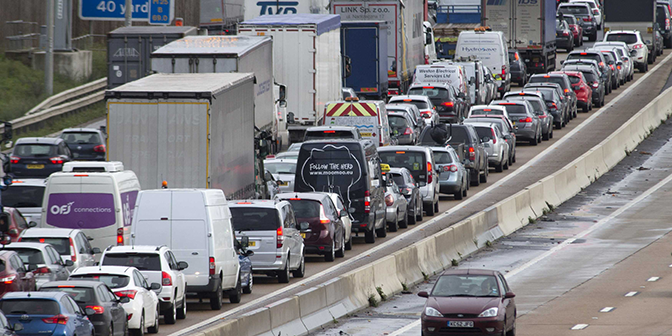Is Broadcast Part of the Solution to Internet Traffic Congestion?

Akamai’s Chief Architect Will Law talked about the trends of Internet connectivity at the ATSC Broadcast Television Conference held on May 14, 2015 in Washington DC. He identified that delivering high quality video will be a challenge to the Internet infrastructure in the future, and that integration of broadcast and Internet could be a solution to that problem.
Akamai’s Intelligent Platform™ is a leading cloud platform that delivers secure, high-performing user experiences. The platform is a globally distributed network of servers and intelligent software, and it handles over two trillion interactions daily. Through this platform Akamai has gathered insightful metrics such as connection speed, network availability, traffic patterns, etc. over different geographical regions. Akamai’s Chief Architect shared some of the data and statistics with the ATSC Broadcast Television Conference audience.
Although average connection speed is increasing across the US, there are significant disparities among the states. It is generally accepted among Internet providers that OTT delivery of a 4K UHD signal would require about a 15 Mbps internet pipe. The following figure shows that many states are not yet ready to support a widespread 4K UHD OTT service.

Akamai also showed that peak bandwidth demand varies with time and coincides with big events. Moreover, the peak bandwidth demand also increases year by year. The following figure shows that the peak bandwidth demand is spiky and that the envelope of the peaks is growing.

Factors that are driving the demand for higher Internet speed are 4K/UHD video, OTT services, catch-up TV, device-based video playback outside the living room, and increasing user expectations of quality. There are a few potential solutions to the bandwidth challenge: better compression (HEVC), growth in average throughput, backbone fiber improvements, hybrid UDP protocols, possibility of IP multicast, P2P, HTTP2, standards such as MPEG-DASH, decreasing cost of storage, and broadcast integration.
Akamai’s solution to the bandwidth problem is to place edge servers near the end user, as shown in the following figure. The edge server, marked as an orange box, is physically near the end user; this kind of placement reduces the burden of fetching the content from distant sources and thus reduces overall internet traffic.

Broadcasters have several opportunities in this environment. First, they could form a partnership with CDN providers and collaborate with caching content on the edge servers. Second, using new technologies such as ATSC 3.0, broadcasters could reach many of the end users directly over the air, especially during the large bandwidth demand spikes associated with big events. If terrestrial broadcasts are integrated with broadband networks, service to consumers will be optimized from the combination of the inherent flexibility of the Internet and the high spectrum efficiency of broadcast delivery.

